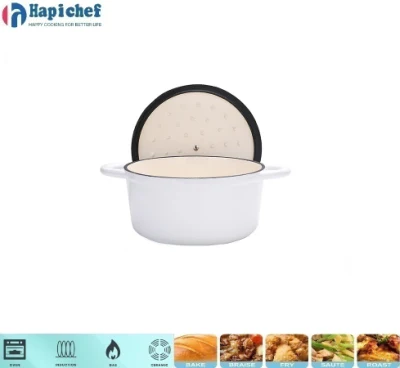china reseasoning a cast iron pan
Reseasoning a Cast Iron Pan A Simple Guide
Cast iron pans are revered in kitchens around the world for their durability and excellent heat retention. One of the unique features of cast iron cookware is that it improves with age, growing better with use. However, to ensure your cast iron pan continues to perform well, it may require reseasoning from time to time. Reseasoning not only enhances its non-stick surface but also prevents rust and food from sticking. Here's a step-by-step guide to help you reseason your cast iron pan effectively.
Why Reseason Your Cast Iron Pan?
Over time, the seasoning on your cast iron pan can wear down due to frequent use, harsh cleaning methods, or cooking acidic foods. A well-seasoned pan develops a natural non-stick surface, making it easier to cook and clean. Reseasoning restores this surface, protecting the pan and improving its cooking capabilities.
What You Need
Before you get started, gather the following items - Mild dish soap - A stiff brush or non-abrasive scrubber - Clean, dry cloths or paper towels - Cooking oil with a high smoke point (such as flaxseed oil, grapeseed oil, or canola oil) - Aluminum foil or a baking sheet (for catching drips in the oven)
Step-by-Step Reseasoning Process
1. Clean Your Pan Begin by cleaning your cast iron pan. If there are significant food residues or rust, use a stiff brush and mild dish soap with warm water to scrub the surface. It is typically advised not to use soap on cast iron, but it can be effective for stubborn spots during reseasoning. Rinse thoroughly and dry the pan completely to prevent rusting.
2. Remove Rust (if necessary) If your pan has developed rust, you may need to remove it before reseasoning. Use steel wool or a similar abrasive scrubber to scrub away the rust, making sure to rinse and dry the pan thoroughly afterward.
china reseasoning a cast iron pan

3. Apply Oil Once the pan is clean and dry, it’s time to apply a thin layer of cooking oil. Use a paper towel or a clean cloth to rub the oil all over the surface of the pan, including the bottom and handle. Make sure to coat every part evenly, but avoid using excess oil, as this can lead to a sticky surface.
4. Bake the Pan Preheat your oven to 450°F (230°C). Place aluminum foil or a baking sheet on the lower rack to catch any drips. Place the oiled pan upside down on the upper rack. This allows the oil to be distributed evenly during the seasoning process and prevents pooling. Bake the pan for an hour.
5. Cooling Down After an hour, turn off the oven and let the pan cool inside the oven. This gradual cooling helps set the seasoning. Once the pan is cool, it’s ready for use.
6. Repeat if Necessary Depending on the initial condition of your cast iron pan, you might want to repeat the oiling and baking process a couple of times to build up a stronger seasoning layer.
Maintaining Your Newly Seasoned Pan
To keep your cast iron pan in optimal condition after reseasoning, remember these simple maintenance tips
- Avoid cooking acidic foods (like tomatoes and vinegar-based sauces) for a while after reseasoning. - Clean the pan using hot water and a stiff brush, avoiding soap unless necessary. - Dry the pan completely after washing. - Apply a thin layer of oil after each use to maintain the seasoning.
Conclusion
Reseasoning a cast iron pan is a straightforward process that ensures your investment remains in excellent condition for years to come. With regular care and maintenance, your cast iron cookware can become a treasured centerpiece in your kitchen, serving up delicious meals for generations. So embrace the art of seasoning, and enjoy all the benefits that come with it!
-
Why Every Kitchen Needs a Casserole Cast Iron DishNewsJun.24,2025
-
Experience the Tradition and Quality of Cast Iron CookwareNewsJun.24,2025
-
Double Sided Cast Iron Grill PanNewsJun.24,2025
-
Cast Iron Dutch Ovens You’ll Actually UseNewsJun.24,2025
-
Buy Cast Iron Griddle for Everyday CookingNewsJun.24,2025
-
Barbecue Iron Grill Cooking PowerNewsJun.24,2025
-
Standard Product Lines from Cast Iron Cookware SuppliersNewsJun.11,2025
